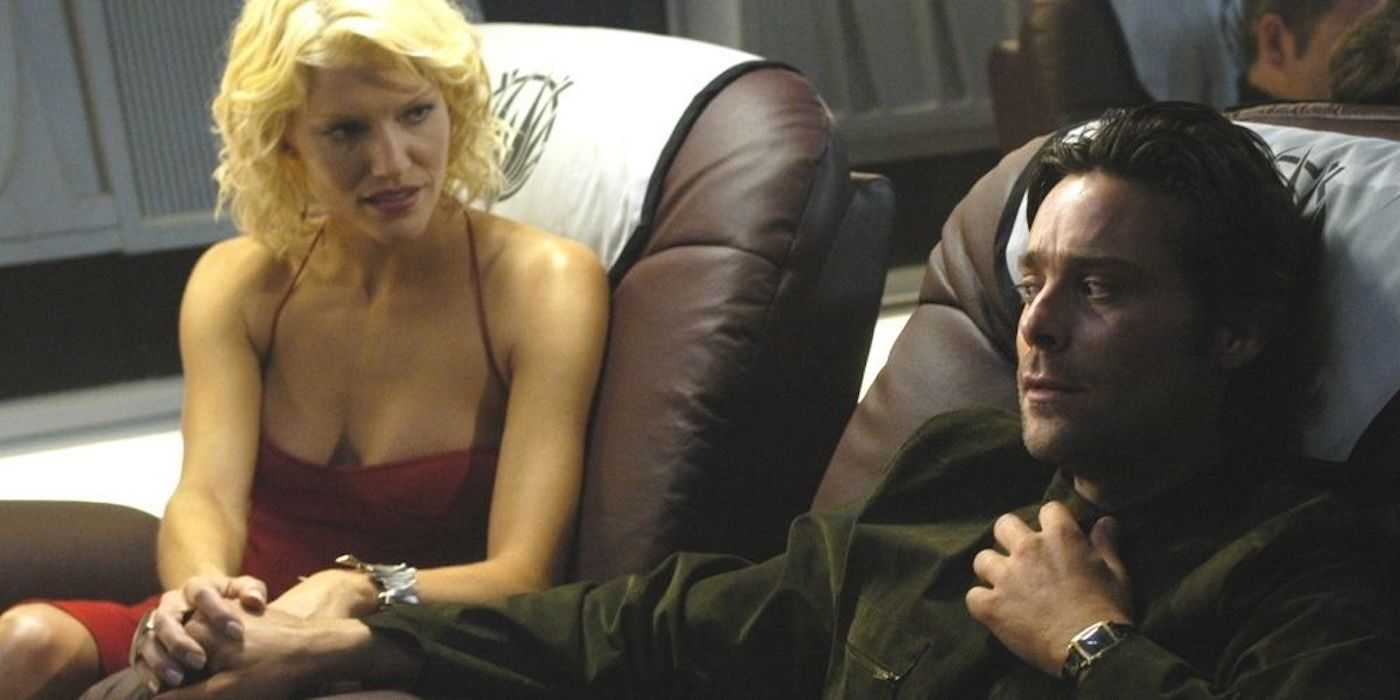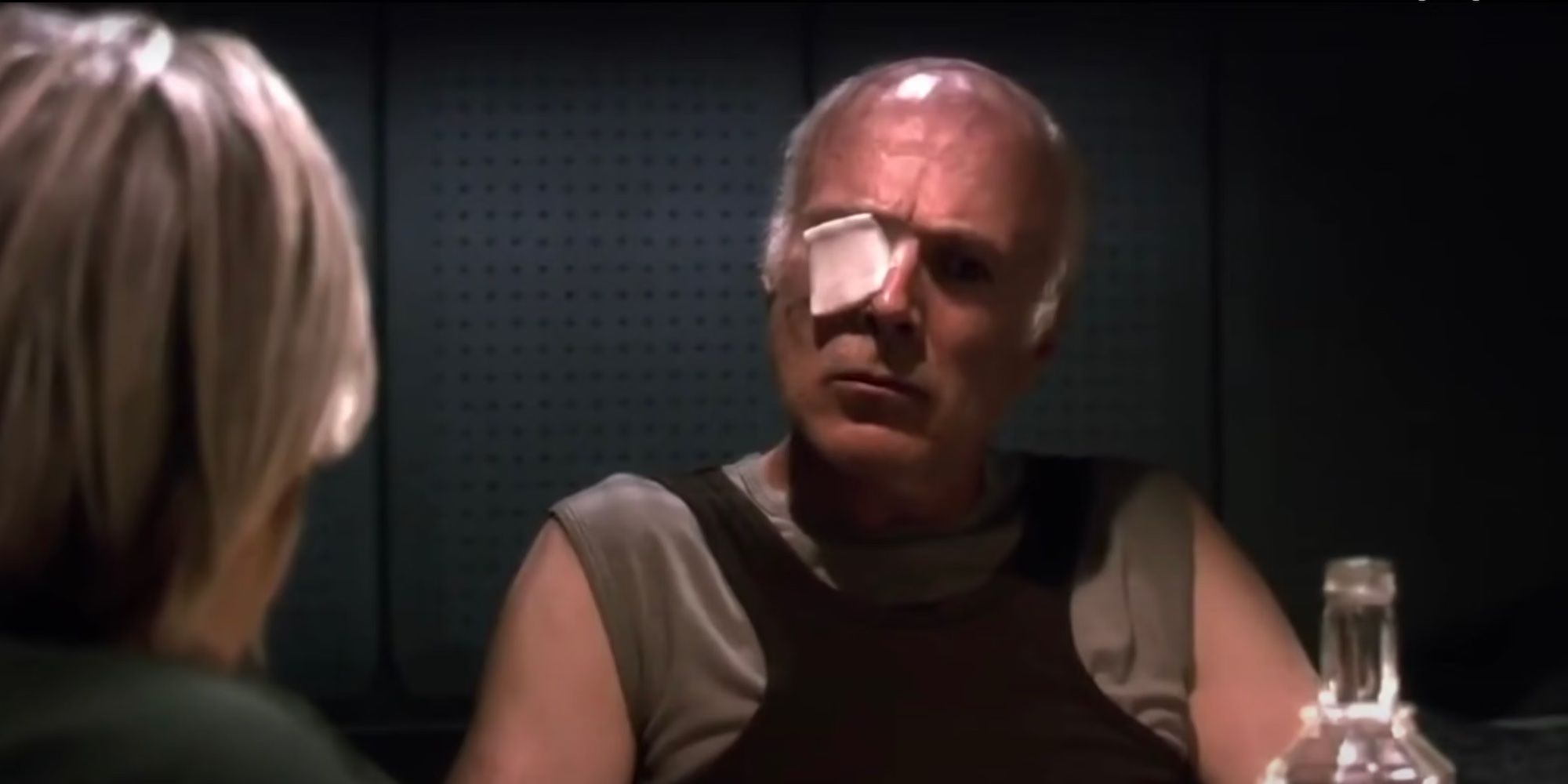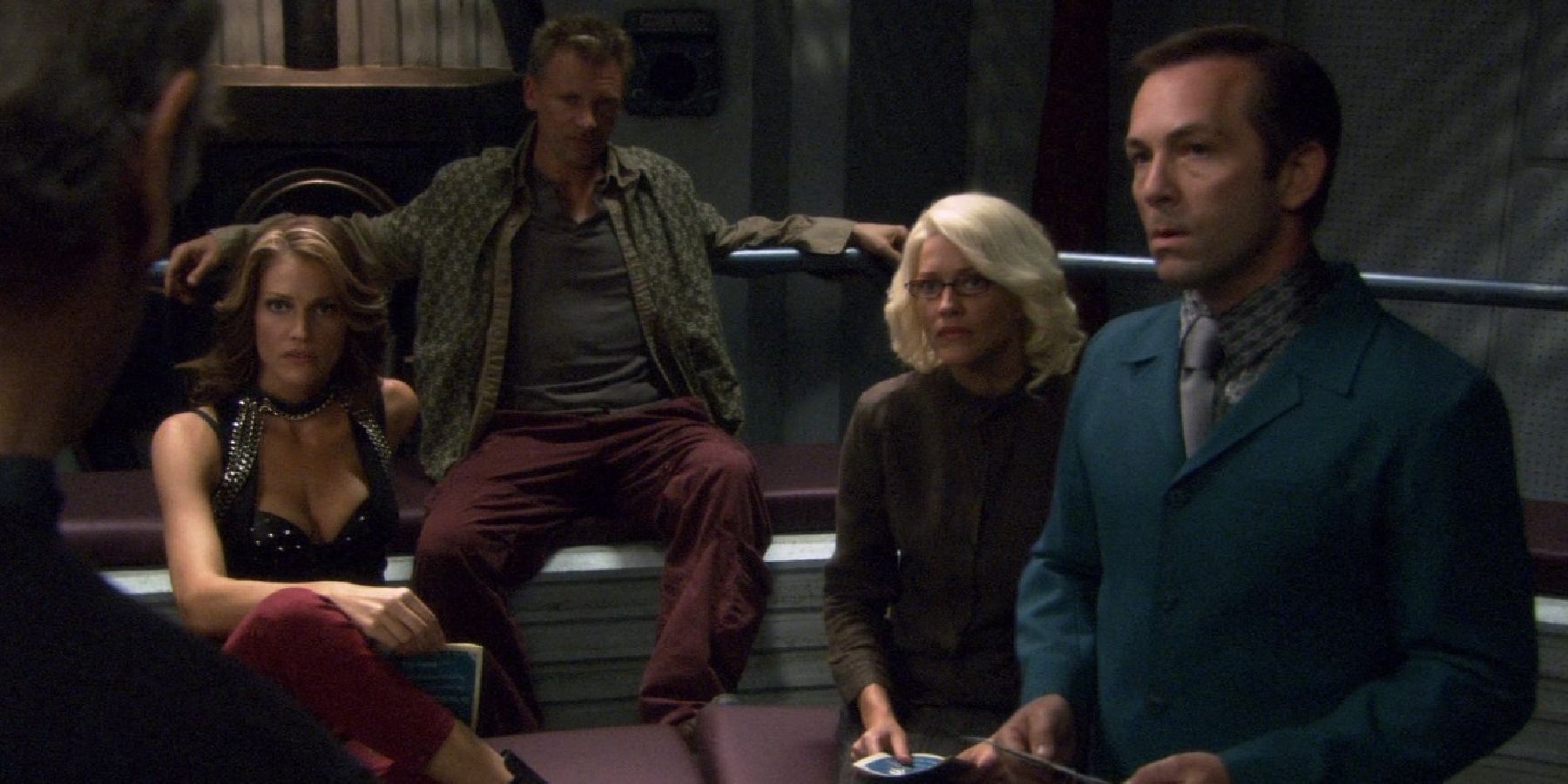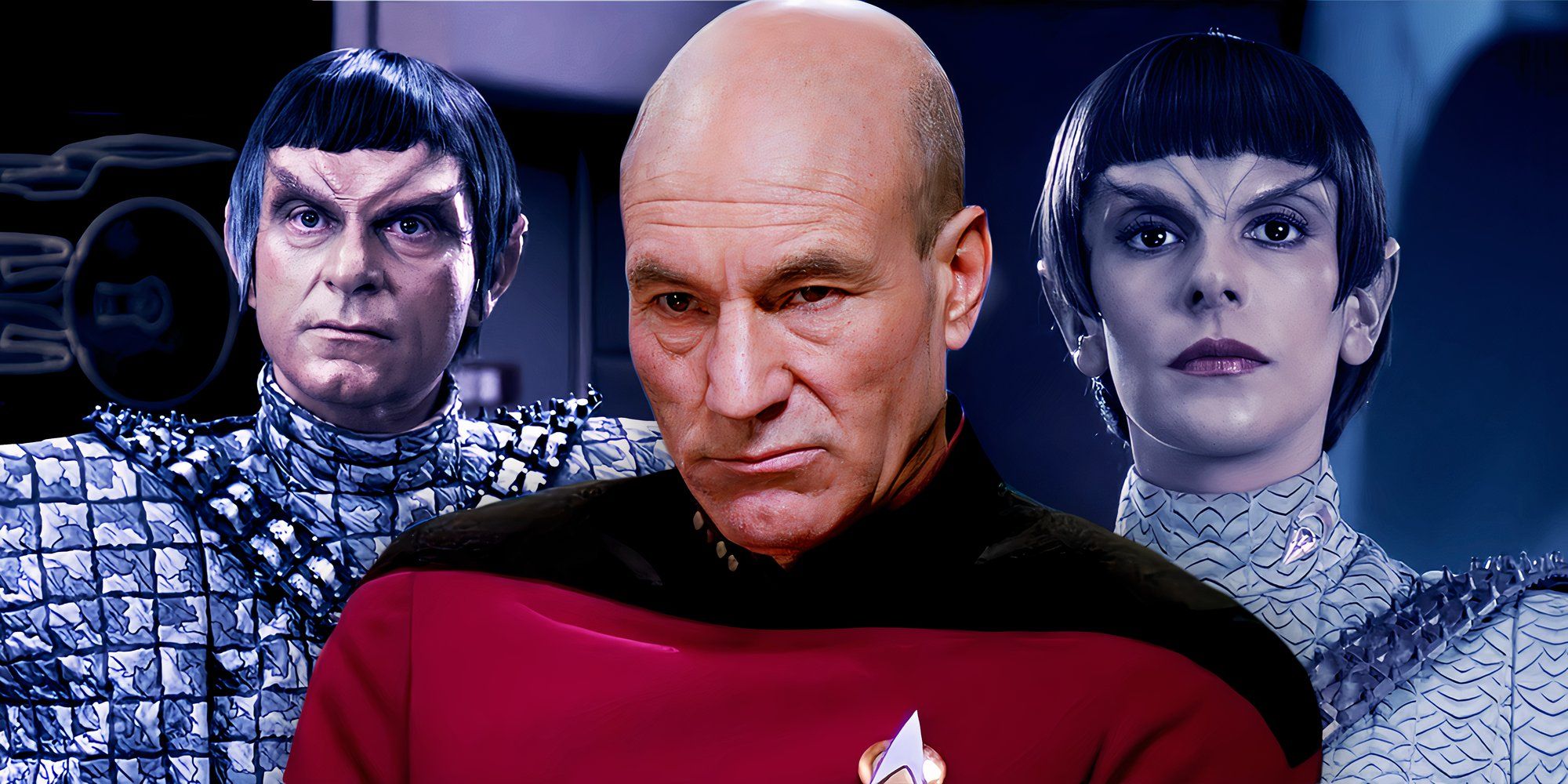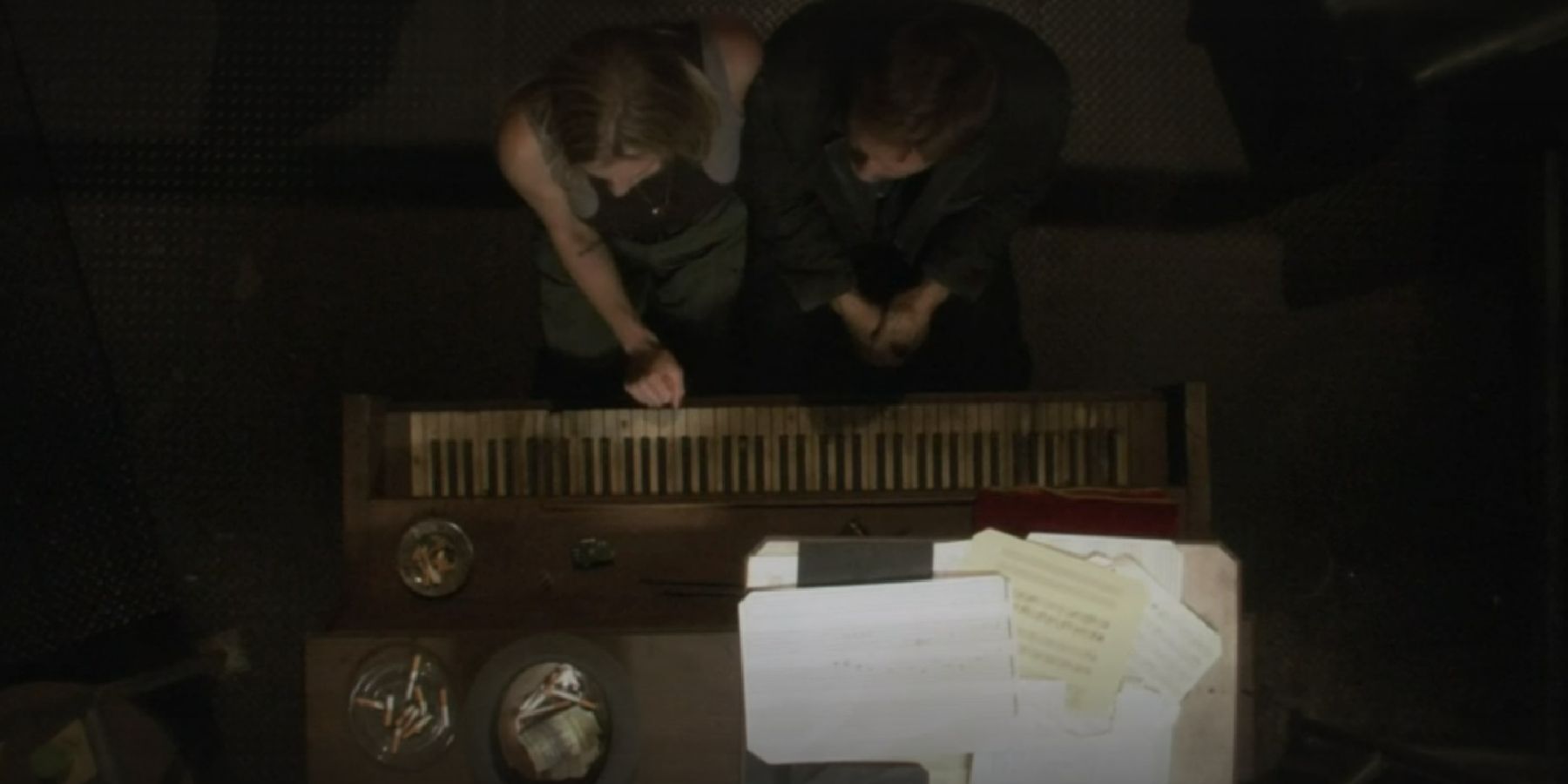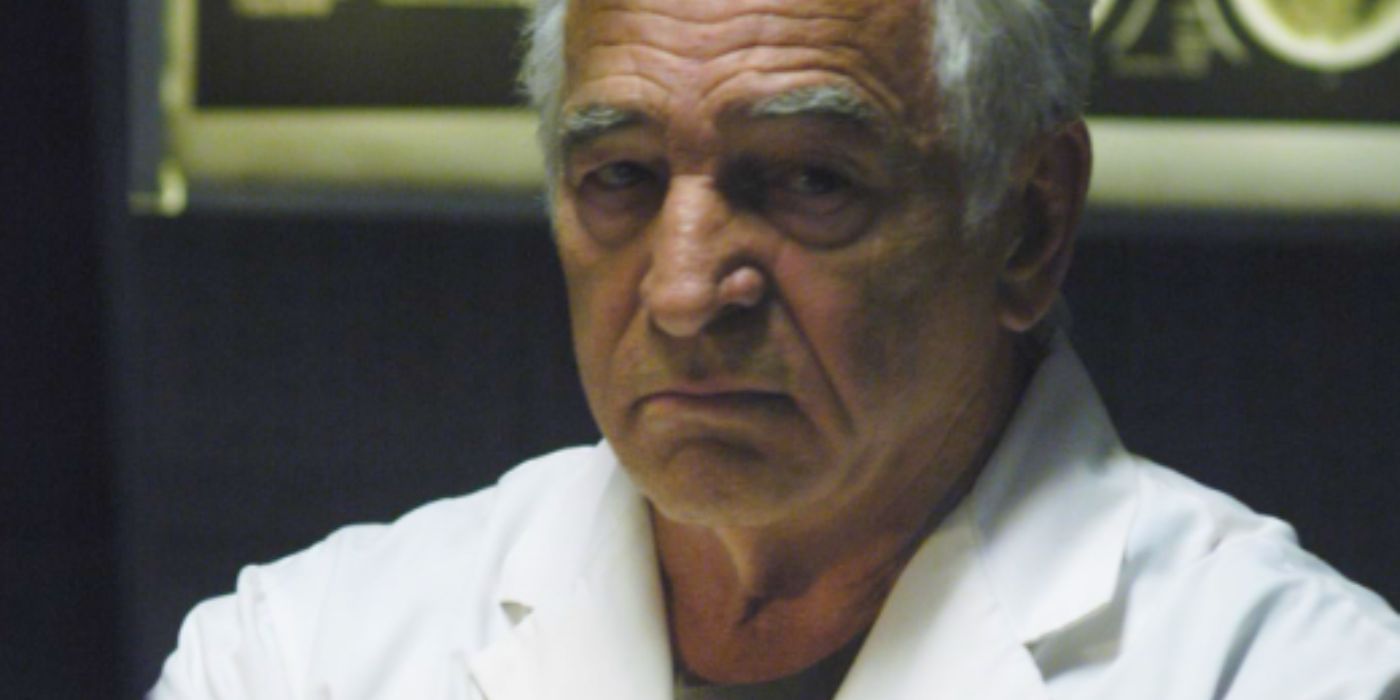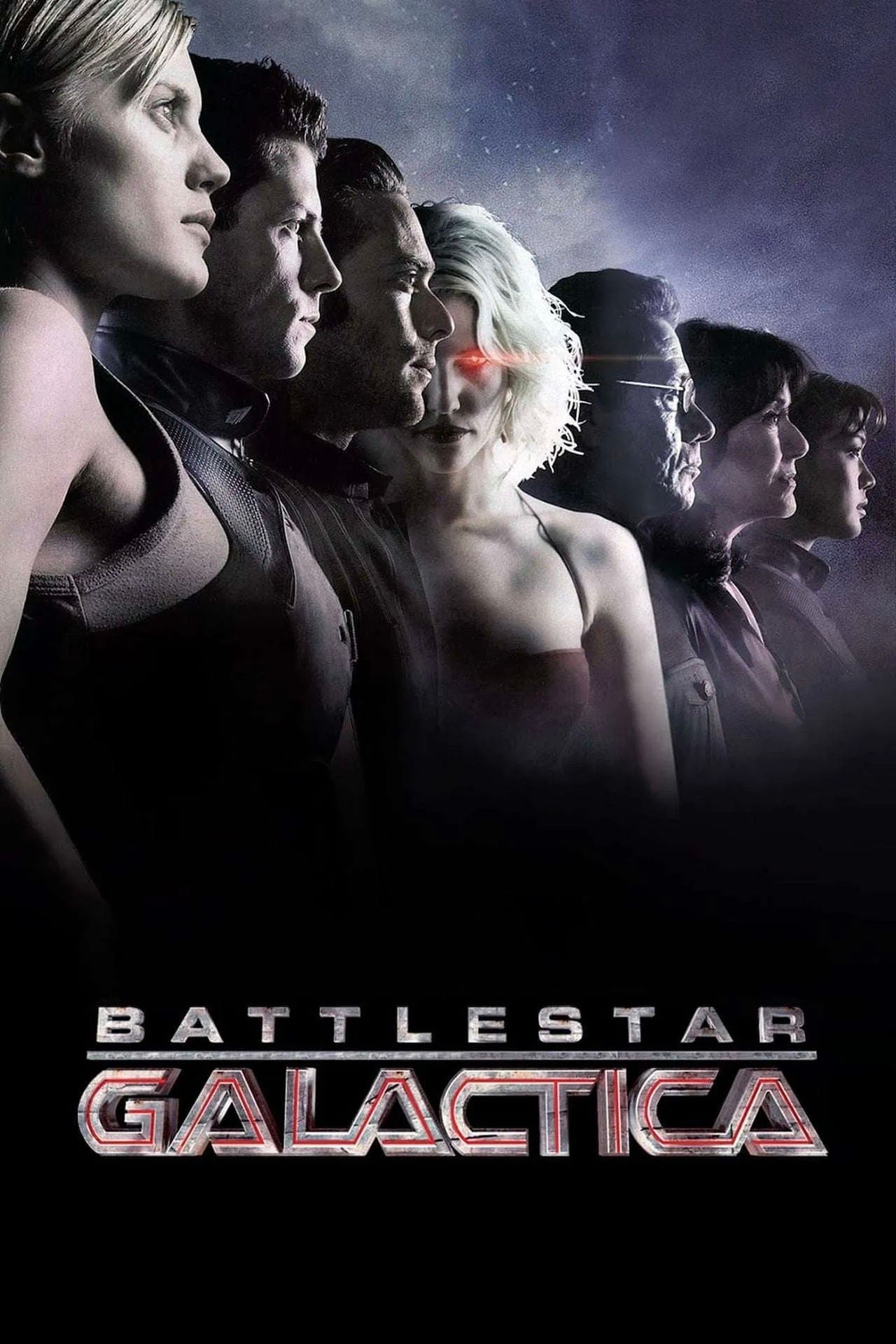The 2004 reimagined Battlestar Galactica and the Star Trek franchise have both left an indelible mark on the science fiction genre, pushing the boundaries of storytelling and challenging viewers to think critically about the human condition. These iconic franchises have explored complex themes of morality, ethics, and the nature of existence while delivering well-written characters and thought-provoking themes. They also share a lot of similarities, from themes to storylines.
The connections between these two series run deeper than mere genre similarities. Ronald D. Moore, who wrote for both shows, is a key figure in both franchises and brought a unique perspective and style to them. His involvement in the fourth Star Trek showStar Trek: Deep Space Nine and the reimagined version of Battlestar Galactica allowed for a cross-pollination of ideas and themes, resulting in a series of specific parallels between the two.
10 Deep Space Nine Inspired Battlestar Galactica’s Starbuck
As a senior writer on Star Trek: Deep Space Nine, Ronald D. Moore was instrumental in exploring the themes of war and occupation, and the interaction between these circumstances and human nature. DS9’s Bajor and Cardassia occupation works as a stand-in for several occupations in real human history, paving the way for Moore’s penchant for historical allegory in Battlestar Galactica. Another authorial souvenir he carried from DS9 to BSG was the predecessor to the reimagined Starbuck.
Moore wanted to create a more grounded and realistic version of the original Starbuck character, played by Dirk Benedict. To achieve this, he decided to make “Starbuck” and “Apollo” military call signs rather than given names, a change that made the Battlestar Galactica reboot better. Moore drew inspiration from Kira Nerys, a strong and determined character from Star Trek: Deep Space Nine, for Starbuck’s real name, Kara Thrace. This contributed to a more compelling and believable character. By grounding the characters in reality, Moore was able to explore the human consequences of war.
9 Captain Adama Has His Own Signature Maneuver In Battlestar Galactica
BSG is renowned for its complex characters, moral dilemmas, and thrilling action sequences. In one of the most iconic sci-fi scenes in Battlestar Galactica, the “Adama Maneuver” showcases the series’ ability to blend tactical brilliance with high-stakes drama. To rescue the human colonists trapped on New Caprica, Commander Adama devises a daring plan. By sacrificing the Galactica, he lures the Cylon fleet away, allowing a squadron of Vipers to strike a decisive blow.
This audacious move highlights the unwavering determination of the Colonial Fleet. However, the maneuver comes at a significant cost. The Galactica suffers substantial damage, not from atmospheric entry but from the unexpected arrival of four Cylon Basestars and their overwhelming firepower. Despite the risks, the Adama Maneuver proves to be a critical turning point in the series, demonstrating the lengths to which the human survivors will go to ensure their survival. Star Trek characters have their own signature moves throughout the franchise, including Spock’s Vulcan nerve pinch.
8 Battlestar Galactica & Star Trek Both Feature Characters Hallucinating Bad Influences
Ronald D. Moore is a master at crafting complex and compelling characters in Battlestar Galactica. Two characters that are equal parts fascinating, entertaining, and infuriating to watch are Gaius Baltar and the vision of Number Six only he can see. Baltar’s sanity is gradually eroded by Six, who makes the accomplished scientist question all his vital beliefs. Moore blurs the lines between reality and delusion, querying the true nature and motivations of Battlestar Galactica’s Six and why only Gaius can see her.
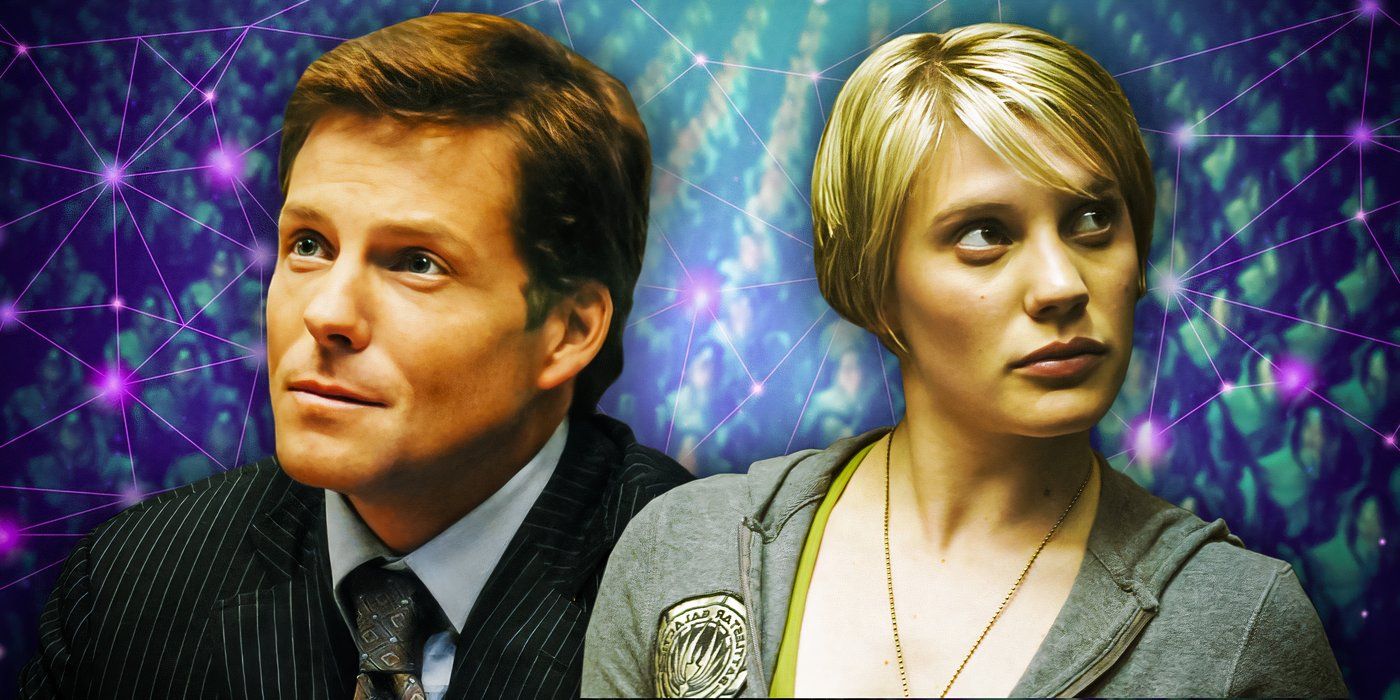
Related
10 Best Battlestar Galactica Theories That Never Came True
These Battlestar Galactica theories might not have been true, but they remain interesting alternate paths the show could have gone on.
Exploring hallucination is evident in Moore’s earlier work on Star Trek: Deep Space Nine. In the episode “Waltz,” Gul Dukat’s descent into madness is explored. While the episode offers a great character study, it lacks the suspenseful build-up that makes Baltar’s story so compelling. By the time Battlestar Galactica arrives, Moore has honed his craft. He understands the power of withholding information and gradually unveils the truth. This approach creates a sense of unease and suspense, as characters interact with Baltar unaware of the invisible influence at his shoulder. It also offers comedy gold at times.
7 Battlestar Galactica & Deep Space Nine Both Explore Addiction To Stims
One theme explored in Battlestar Galactica is the pervasive issue of addiction, especially in an overworked fleet. It is particularly evident in one of the best Cylon characters in Battlestar Galactica Colonel Tigh. Tigh’s alcoholism is a recurring motif throughout the series. As seen in “Resistance,” Tigh’s drinking problem becomes increasingly apparent. His reliance on alcohol to cope with the stresses of command leads to impulsive decisions and a disregard for the consequences of his actions. Tigh’s declaration of martial law and subsequent actions resulted in the tragic loss of civilian lives.
This theme is not new to Moore’s work. In the Star Trek: Deep Space Nine episode “Valiant,” he delves into the psychological impact of prolonged warfare on a crew of soldiers. The captain’s addiction to stims ultimately leads to a fatal decision, underscoring the destructive nature of substance abuse. Battlestar Galactica expands on this theme, with both Tigh and Starbuck struggling with alcoholism within a pervasive drinking culture. The series demonstrates how addiction can cloud judgment, impair decision-making, and ultimately lead to tragic consequences.
6 Star Trek’s Changelings Are Comparable To Battlestar Galactica’s Cylons
Star Trek: Deep Space Nine introduced the terrifying concept of the changeling, a shapeshifting species capable of assuming any form. While this premise offered endless possibilities for suspense and paranoia, the show often struggled to fully realize its potential. The changeling threat, though initially intriguing, became somewhat diluted as the series progressed. While there were notable instances, such as the infiltration of Starfleet Headquarters, where the consequences of a shapeshifting enemy were explored, these moments were often overshadowed by other plotlines.
BSG took a different approach to the shapeshifter concept with the Cylon infiltrators. By limiting the number of infiltrators to a dozen within the context of different humanoid Cylon models in Battlestar Galactica, the series was able to maintain a constant level of suspense and paranoia. Every character became suspect, as the audience was forced to question the true identity of those around them. This focused approach allowed the series to fully explore the implications of a society living under the constant threat of infiltration.
5 Battlestar Galactica’s “Hero” & Star Trek: The Next Generation’s “The Defector” Share A Similar Premise
Both Battlestar Galactica‘s “Hero” and Star Trek: The Next Generation’s “The Defector” offer compelling narratives that revolve around deception and betrayal. In both episodes, a figure arrives, seemingly escaping a perilous situation, only to reveal a sinister agenda. In “Hero,” a Cylon infiltrator, disguised as a human pilot, arrives on the Galactica, claiming to have escaped the Cylons. Starbuck, initially trusting the newcomer, gradually uncovers the deception through careful observation and deduction. In a tense BSG scene, Starbuck astutely points out, “The Cylons could have wasted him any number of times, and they didn’t.”
Both episodes emphasize the need for vigilance and the potential for deception…
Similarly, in “The Defector,” a Romulan officer defects to the Federation, claiming to have crucial information about Romulan plans. However, Geordi La Forge quickly realizes that the defector is a plant, and breaks down his reasoning. The stakes are high in this episode with potential war on the horizon. Both episodes emphasize the need for vigilance and the potential for deception to undermine even the most well-intentioned efforts. The two episodes also share a common theme of the blurred lines between friend and foe. Both the Cylon infiltrator and the Romulan defector are skilled at manipulating emotions and exploiting trust.
4 Networked Ships Become A Problem In Both Battlestar Galactica & Star Trek
One of the most perplexing strategic decisions made by the Colonial Fleet in Battlestar Galactica was the development of networked ships, such as the Mercury-class Battlestars like the Pegasus, one of the fastest ships in Battlestar Galactica. Given the Cylons’ advanced technological capabilities and their history of exploiting vulnerabilities in human systems, the decision to create a network that could be compromised was a risky one. This oversight led to numerous security breaches and near-catastrophic events, highlighting the importance of robust security measures, especially in the face of an intelligent and adaptive enemy.
Networked ships also became a problem in Star Trek: The Next Generation in the form of the fleet network. While not as explicitly dangerous as the Cylon network, the Federation’s network was still vulnerable to hacking and sabotage. The Borg, for example, were able to infiltrate the network and gain access to sensitive information, demonstrating the risks associated with interconnected systems, even in a seemingly advanced civilization. This suggests that decryption technology is so advanced that traditional security measures are rendered obsolete.
3 Battlestar Galactica & Star Trek Both Draw Upon Philosophical Themes
One of the defining characteristics of Battlestar Galactica is its exploration of profound philosophical questions. This thematic depth is a clear influence of Star Trek, a franchise renowned for its thought-provoking narratives. Ron Moore, the creator of the reimagined Battlestar Galactica, was heavily influenced by Star Trek’s tradition of using science fiction as a platform for philosophical discourse. Both series delve into complex ethical dilemmas, such as the nature of consciousness, the morality of war, and the meaning of existence.
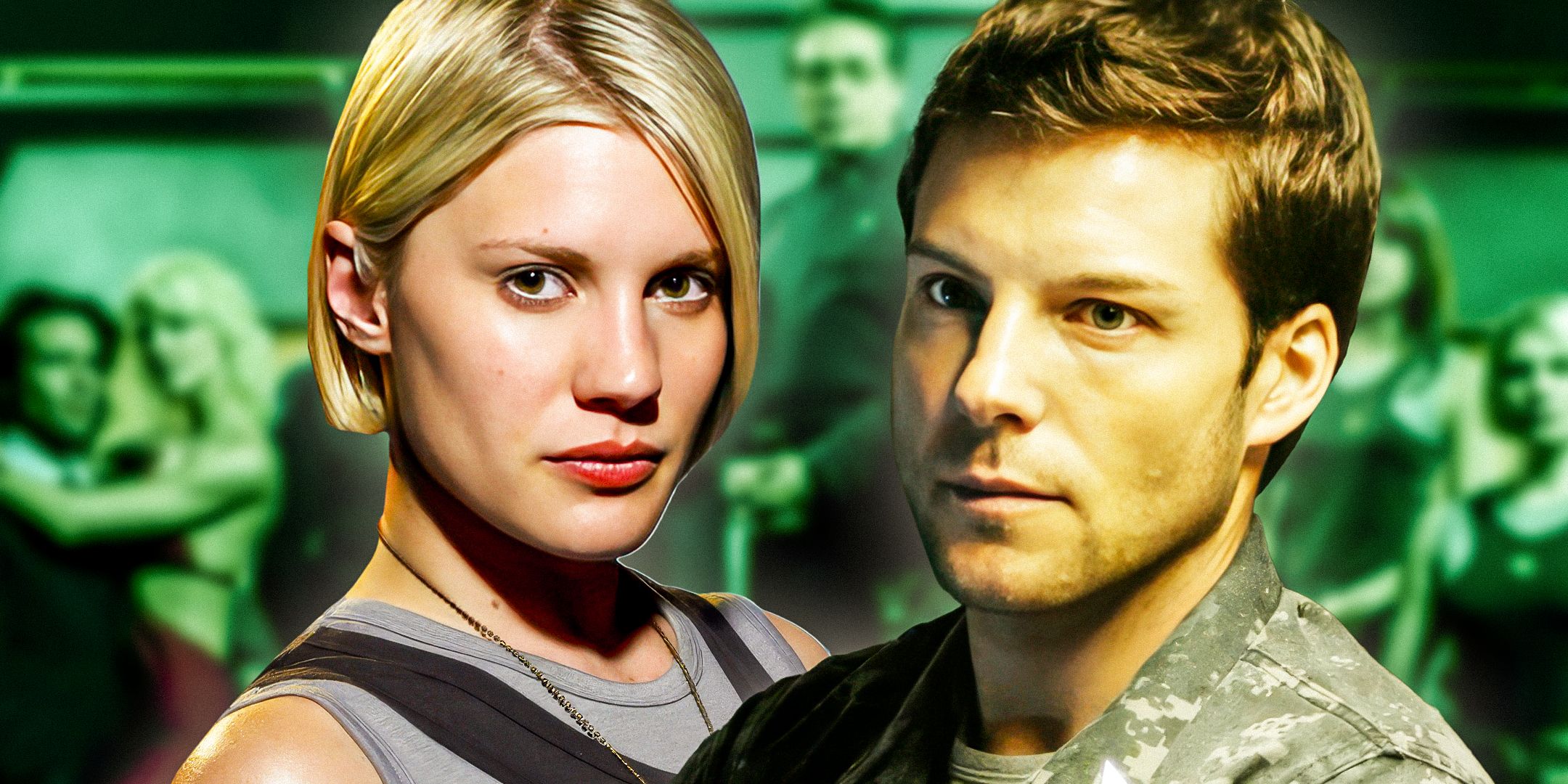
Related
10 Best Quotes From Battlestar Galactica
Battlestar Galactica is full of iconic quotes that capture the show’s universe as well as its theological and religious allegoric themes.
In Battlestar Galactica, the Cylons raise questions about the definition of humanity and the potential for artificial intelligence to surpass its creators. Similarly, the Star Trek franchise often explores themes of prejudice, tolerance, and the responsibility of a technologically advanced civilization. Star Trek’s captains have a range of leadership qualities and make difficult choices. The characters in both series are multifaceted, grappling with existential crises. Characters like William Adama and Captain Jean-Luc Picard are forced to challenge their beliefs and values. These characters, along with their supporting casts, engage in philosophical debates that resonate with viewers.
2 Battlestar Galactica & Star Trek Both Feature Mysterious Cosmic Music
Another example of Moore’s experiences on Star Trek: Deep Space Nine informing his writing on BSG is the major borrowed idea that appeared in both DS9 and Battlestar Galactica. In Star Trek: Deep Space Nine‘s “Equilibrium,” Jadzia Dax unexpectedly displays a previously unknown musical talent. This sudden ability raises questions about the nature of the Trill symbiont and the memories it carries. It is later revealed that Jadzia is accessing the memories of Joran Dax, a previous host whose existence was concealed due to a tragic scandal.
Ronald D. Moore uses the same device for the Final Five in Battlestar Galactica. These Cylons share a collective memory, the song “All Along the Watchtower.” This ultimately leads to their discovery of their Cylon identity. Moore further explores this theme when Starbuck’s pursuit of a half-remembered song leads to a crucial revelation about the fate of humanity – she uses the song for the coordinates to Earth. The song is also used in the end credits of the BSG finale. Cyclically, Star Trek: Discovery uses this musical motif idea. “All this has happened before, and it will all happen again…”
1 Battlestar Galactica’s Cottle Has Similarities To Star Trek’s McCoy
Both Battlestar Galactica and Star Trek feature medical professionals who embody a blend of cynicism and compassion. Dr. Cottle from Battlestar Galactica shares many similarities with Dr. McCoy from Star Trek. Both characters are known for their blunt honesty, often speaking truths that challenge authority figures. They are also empathetic and dedicated to the well-being of their patients. While McCoy’s humor often lightens the mood, Cottle’s dry wit provides a welcome contrast to the often grim reality of the Battlestar Galactica universe.
One example of Cottle’s grizzled disposition shining in Battlestar Galactica is when he is questioning President Laura Roslin on why she has waited so long to have a breast exam. While reprimanding her, he lights a cigarette, much to Roslin’s displeasure, and adding a dark irony to the exchange. McCoy’s humor is much more quotable with his iconic “I’m a doctor, not a…” joke format, followed by professions he is obviously not qualified for. It is a classic line that has become synonymous with the character and continues to be referenced and parodied in popular culture.



